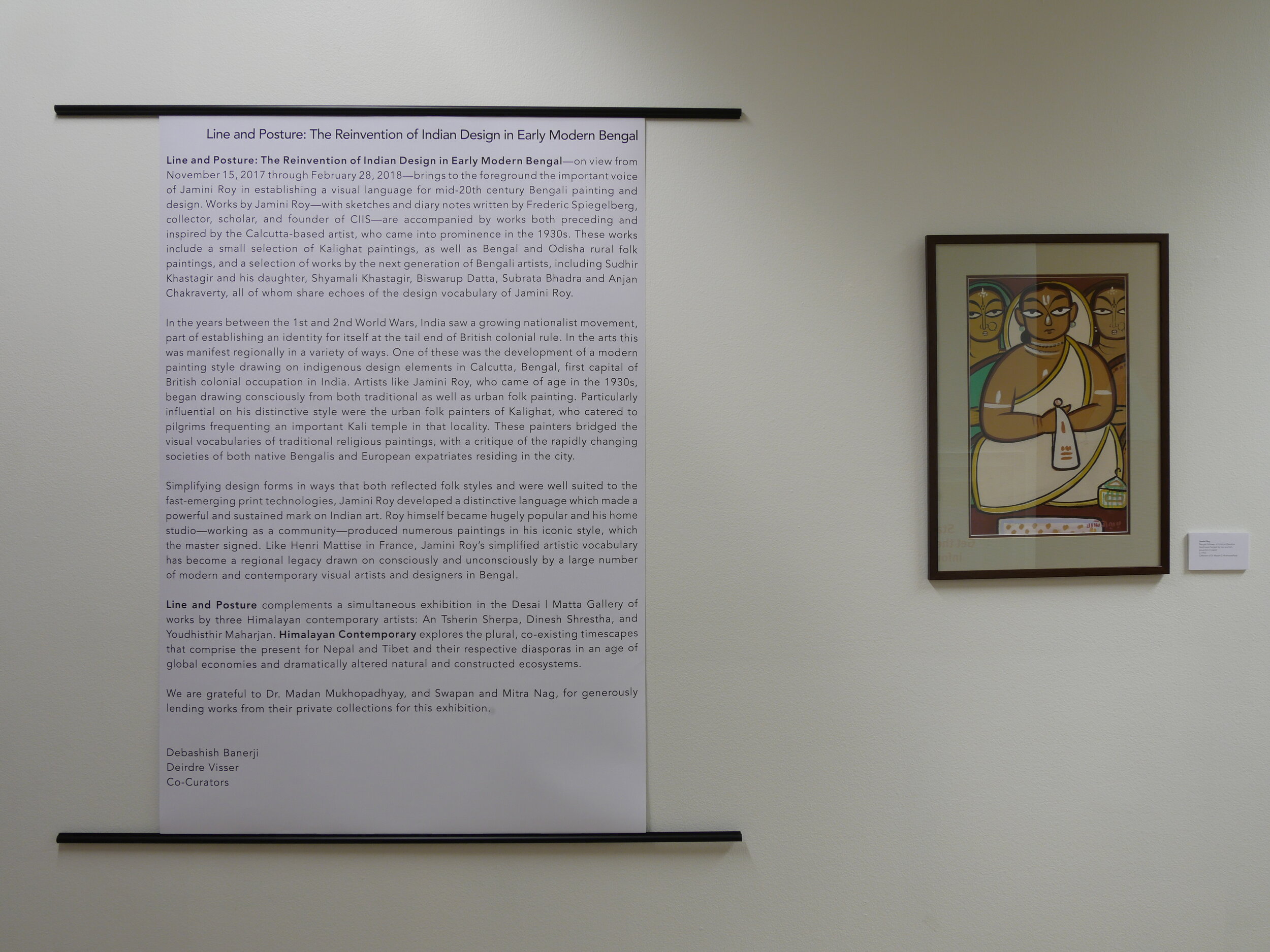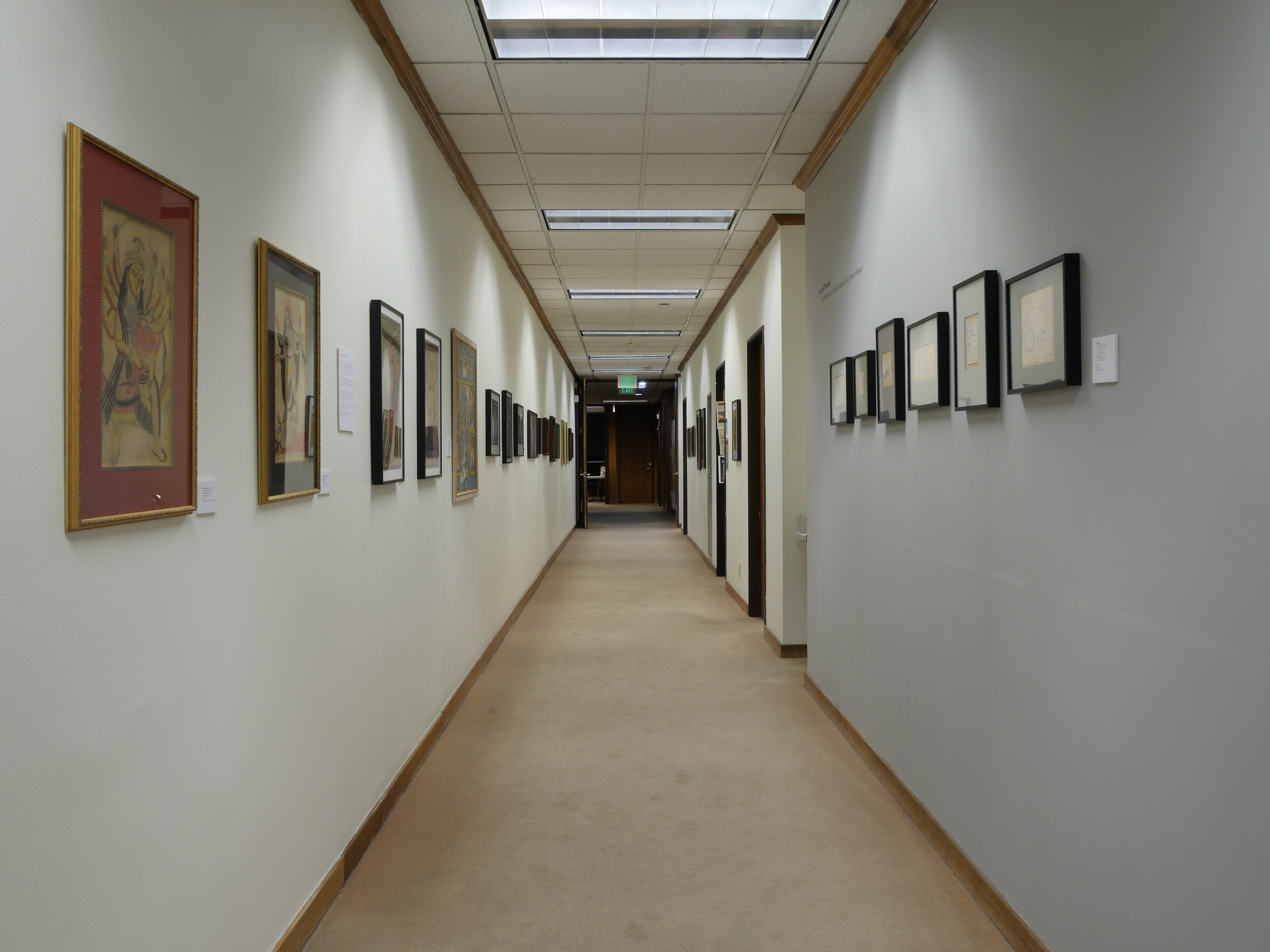Line and Posture: The Reinvention of Indian Design in Early Modern Bengal
November 2017–February 2018
4th Floor Gallery








Line and Posture: The Reinvention of Indian Design in Early Modern Bengal—on view from November 15, 2017 through February 28, 2018—brings to the foreground the important voice of Jamini Roy in establishing a visual language for mid-20th century Bengali painting and design. Works by Jamini Roy—with sketches and diary notes written by Frederic Spiegelberg, collector, scholar, and founder of CIIS—are accompanied by works both preceding and inspired by the Calcutta-based artist, who came into prominence in the 1930s. These works include a small selection of Kalighat paintings, as well as Bengal and Odisha rural folk paintings, and a selection of works by the next generation of Bengali artists, including Sudhir Khastagir and his daughter, Shyamali Khastagir, Biswarup Datta, Subrata Bhadra and Anjan Chakraverty, all of whom share echoes of the design vocabulary of Jamini Roy.
In the years between the 1st and 2nd World Wars, India saw a growing nationalist movement, part of establishing an identity for itself at the tail end of British colonial rule. In the arts this was manifest regionally in a variety of ways. One of these was the development of a modern painting style drawing on indigenous design elements in Calcutta, Bengal, first capital of British colonial occupation in India. Artists like Jamini Roy, who came of age in the 1930s, began drawing consciously from both traditional as well as urban folk painting. Particularly influential on his distinctive style were the urban folk painters of Kalighat, who catered to pilgrims frequenting an important Kali temple in that locality. These painters bridged the visual vocabularies of traditional religious paintings, with a critique of the rapidly changing societies of both native Bengalis and European expatriates residing in the city.
Simplifying design forms in ways that both reflected folk styles and were well suited to the fast-emerging print technologies, Jamini Roy developed a distinctive language which made a powerful and sustained mark on Indian art. Roy himself became hugely popular and his home studio—working as a community—produced numerous paintings in his iconic style, which the master signed. Like Henri Mattise in France, Jamini Roy’s simplified artistic vocabulary has become a regional legacy drawn on consciously and unconsciously by a large number of modern and contemporary visual artists and designers in Bengal.
Line and Posture complements a simultaneous exhibition in the Desai | Matta Gallery of works by three Himalayan contemporary artists: An Tsherin Sherpa, Dinesh Shrestha, and Youdhisthir Maharjan. Himalayan Contemporary explores the plural, co-existing timescapes that comprise the present for Nepal and Tibet and their respective diasporas in an age of global economies and dramatically altered natural and constructed ecosystems.
We are grateful to Dr. Madan Mukhopadhyay, and Swapan and Mitra Nag, for generously lending works from their private collections for this exhibition.
Debashish Banerji
Deirdre Visser
Co-Curators